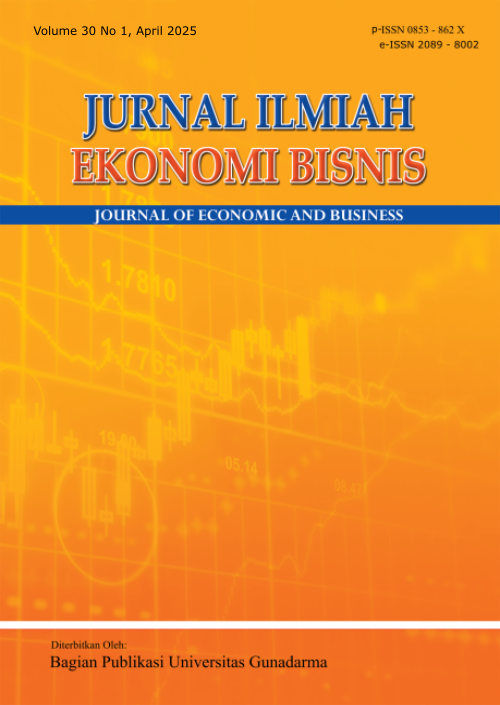ANALYSIS OF TOURISM COMPETITIVENESS POTENTIAL IN LABOUR ABSORPTION IN WEST SUMATRA
Padang State University
Indonesia
Padang State University
Indonesia
Abstract
This study aims to determine the competitiveness of tourism sector employment in West Sumatra Province and to determine how much the ability of the tourism sector in creating employment opportunities due to national economic growth. The data used is secondary data sourced from BPS West Sumatra Province. The method used in the research is Shift-Share Analysis and Locatio Quotient (LQ) analysis. This study concludes that the tourism sector of West Sumatra Province is able to create employment opportunities due to the growth of employment opportunities in national, which is indicated by the large number of employment in the tourism sector. The growth of the tourism sector in West Sumatra Province will affect the total growth of the tourism sector in Indonesia. Which shows a positive value means that there is growth in the in the sector due to the influence of the growth of the reference region sector. The West Sumatra Province tourism sector has good growth by having a competitive advantage but not specialised. The development of West Sumatra province must be done by spurring the performance of the tourism sector so that it can grow rapidly and make a large contribution to GRDP growth and employment.
Keywords
References
Aliah, A. D. N., & Hadianto, A. (2016). Peran sektor pariwisata dalam pembangunan perekonomian di Indonesia: Pendekatan Social Accounting Matrix (SAM) (Undergraduate thesis). Faculty of Economics and Management, IPB University.
Azzahra, F., & Sujali. (2013).Pengembangan pariwisata alam Kawasan Ciwidey di Kabupaten Bandung. Jurnal Bumi Indonesia, 2(2), 267–276.
Dogan, E., & Zhang, X. (2023). A nonprarametric panel data model for examining the contribution of tourism to economic growth. Economic Modelling, 128 (November 2023), 1–12.
Faris, M., & Bassam, A. (2018). Analisis penyerapan tenaga kerja sektor pariwisata di Provinsi Jawa Timur Tahun 2010-2016 (Undergraduate thesis). Fakultas Ekonomi Dan Bisnis, Universitas Brawijaya.
Grant, R.M. (1991). The resource-based theory of competitive advantage: Impliccations for strategy formulation. California Management Review, 33(3). doi.org:10.2307/41166664.
Maria, S. (2016). Dampak sektor pariwisata terhadap kesempatan kerja pariwisata di Provinsi Kalimantan Timur. Conference on Management and Behavioral Studies, 1–10.
Miswanto, S. (2018). Dampak pembangunan industri pariwisata terhadap alih fungsi lahan (Studi tentang kehidupan sosial budaya masyarakat desa Teluk Bakau, Kecamatan Gunung Kijang, Kabupaten Bintan. Jurnal Nasional Pariwisata, 10(1), 14–21.
Murray, W. C., Elliot, S., Simmonds, K., Madeley, D., & Taller, M. (2017). Human resource challenges in Canada’s hospitality and tourism industry: Finding innovative solutions. Worldwide Hospitality and Tourism Themes, 9(4), 391–401. doi.org:10.1108/WHATT-04-2017-0022.
Nugroho, SBM. (2020). Beberapa masalah dalam pengembangan sektor pariwisata di Indonesia. Pariwisata, 7(2), 124–131.
Nyoman, N., Darsini, A., & Darsana, I. B. (2014). Pengaruh kunjungan wisatawan, luas artshop dan lokasi artshop terhadap penyerapan tenaga kerja bisnis artshop di kawasan Nusa Dua. E-Jurnal Ekonomi Pembangunan Universitas Udayana, 3(5), 219–226.
Özer, K. O., Latif, H., Sarıışık, M., & Ergün, Ö. (2012). International competitive advantage of Turkish tourism industry: A comperative analyse of Turkey and Spain by using the Diamond Model of M. Porter. Procedia - Social and Behavioral Sciences, 58(12 October 2012), 1064–1076. doi.org:10.1016/j.sbspro.2012.09.1087.
Rahma, F. N., & Handayani, H. R. (2013). Pengaruh jumlah kunjungan wiwatawan, jumlah obyek wisata dan pendapatan perkapita terhadap penerimaan sektor pariwisata di Kabupante Kudus. Diponegoro Journal of Economics, 2(2), 1–9.
Ristek-BRIN. (2020). Panduan indeks daya saing daerah 2020. Kementerian Riset Dan Teknologi, 1–122.
Tarigan, P. N. W., Effendi, I., & Amelia, W. R. (2021). Faktor Yang Mempengaruhi Struktur Modal Perusahaan Industri Mesin dan Tenaga Kerja di Sumatera Utara yang Terdaftar pada Bursa Efek Indonesia. Jurnal Ilmiah Manajemen Dan Bisnis (JIMBI), 2(1), 57–64. https://doi.org/10.31289/jimbi.v2i1.467
Wahyudi, M. F., Suswandi, P. E., & Somaji, R. P. (2019). Analisis daya saing sektor partiwisata terhadap penyerapan tenaga kerja. Jurnal Ekonomi Ekuilibrium, 3(1), 1–9.
Wardani, M. A., & Mulatsih, S. (2018). Analisis daya saing dan faktor-faktor yang memengaruhi ekspor ban Indonesia ke kawasan Amerika Latin. Jurnal Ekonomi Dan Kebijakan Pembangunan, 6(1), 81–100. doi.org:10.29244/jekp.6.1.81-100.
Wijaksono, C. A., Subagiarta, I. W., & Hanim, A. (2015). Analisis potensi daya saing sektor pariwisata dan kontribusi terhadap PDRB Kabupaten Situbondo tahun 2008-2012. Artikel Ilmiah Mahasiswa, 1-8. Retrieved from: chrome-extension://efaidnbmnnnibpcajpcglclefindmkaj/https://repository.unej.ac.id/jspui/bitstream/123456789/64379/1/Corry%20Adi%20Wijaksono.pdf
Wiweka, K., Wachyuni, S.W., Adnyana, P.P., & Safitri, A. N. (2020). Sarana transportasi sebagai daya tarik wisata (Kajian persepsi wisatawan berkunjung ke Kepulauan Seribu) studi kasus kapal KM Sabuk Nusantara 66. Journal of Tourism and Economic, 3(2), 77–96. doi.org:10.36594/jtec/jfmwjc51.
Yoeti, O.A., & Gunadi, I. M. A. (2013). Sustainable tourism sebagai instrumen strategis dalam perencanaanpPembangunan: Suatu analisis dari sisi pengembangan destinasi pariwisata berkelanjutan. Journal of Tourism Destination and Attraction, 1(1), 37–44.
Zuliastri, F., Rindayati, W., & Asmara, A. (2018). Analisis faktor yang memengaruhi aglomerasi industri unggulan daerah dan hubungannya dengan daya saing industri daerah. Jurnal Ekonomi Dan Kebijakan Pembangunan, 2(2), 113–134. doi.org:10.29244/jekp.2.2.2013.113-134


